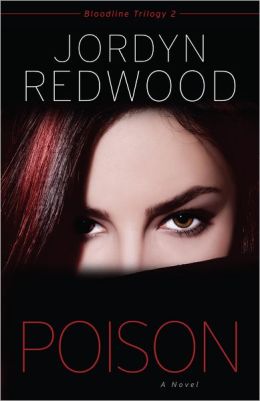Today I’m delighted to have Jordyn Redwood join me with a guest post on how to write show v. tell. As you’ll see below, this is something I believe she did with excellence in her new novel Poison. It’s also why I asked her if she’d like to write a post to share. Without further ado, here’s Jordyn:
 Because the great Cara Putman asked me to do this—am I doing this—but let me first say I am hardly an expert on show versus tell—every writing teacher’s admonition for every storyteller out there. In fact, I was quite shocked when Cara said she was taking notes on some passages in Poisonbecause she thought they were good examples of showing. I am still hoping she will tell me exactly which ones so I can admirer my own amazing work because I was that surprised.
Because the great Cara Putman asked me to do this—am I doing this—but let me first say I am hardly an expert on show versus tell—every writing teacher’s admonition for every storyteller out there. In fact, I was quite shocked when Cara said she was taking notes on some passages in Poisonbecause she thought they were good examples of showing. I am still hoping she will tell me exactly which ones so I can admirer my own amazing work because I was that surprised.
Showing versus telling can definitely be learned (after all, I did it and was never an English major) so don’t go over the writer’s cliff Thelma and Louise style if some of these points don’t hit home. I am still learning some of the more advanced points myself and that’s a mark of a true writer—always desiring to learn more.
The concept of showing could also be described as Deep POV. I think these concepts are honestly interchangeable. So if you hear one—think of the other.
The first (and really good) piece of advice I got on showing was to write my scenes as if I was filming a movie. How would I describe what was on the screen to a reader without stating the obvious?
For instance: He was angry. This is telling. It doesn’t leave any room for the reader to use their imagination. Now, more showing. Her husband swore at her and spittle hit her face seemingly to mark a target for his fist to punch her in the jaw. See the difference? I haven’t said the word “angry” at all, but does this man seem fired up?
While editing, you’re likely telling if you name the feeling. He was mad, sad, fearful…etc.
A great tool I’ve used to help me show more visceral reactions is The Emotion Thesaurus. There is also a website by the same author called The Bookshelf Muse. It gives specific bodily actions for tons of different emotions. Use this as a starting point to generate ideas and then improve them for your own manuscript.
Another tip to help show instead of tell is to phrase things as questions. Telling: She wondered if her attacker was walking behind her. Showing: The echo of footsteps matched her high heels as they clipped down the pavement of the dark alley. Was it him? Was it the man who nearly killed her with a quick slash of a knife across her throat two years ago? The one she presumed was now sending her all those threatening letters—just like before. Now he was free.
To show more—add a visceral reaction from the woman from the emotion she is likely feeling which in this instance would be fear.
The echo of footsteps matched the quickened pace of her heart as she broke out into a run down the dark alley. Instinctively, her hand covered the thick scar as a shield from both the memory and the act. Was it him? Was it the man who nearly killed her with a quick slash of a knife across her throat two years ago? The one she presumed was now sending her all those threatening letters—just like before. Now he was free.
I know—future editor. How can she run with her hand set on her throat? Just to illustrate a point. Edit at will.
Also, don’t feel like you have to do this in the first draft. The first draft is all about getting the words on the page. Showing can be added in subsequent editing phases that you do before the manuscript goes to an agent or publisher, but don’t get too hung up on trying to do a lot in the first draft until it becomes more natural for you.
This is just the beginning. There are many more techniques that can be used so keep working at it and you’ll have the reader sitting inside your character in no time.
Jordyn Redwood is a nurse by day, novelist by night. She has specialized in critical care and emergency nursing for nearly two decades. As a self professed medical nerd, she reads medical textbooks for fun. This led to the creation of Redwood’s Medical Edge– a blog devoted to helping authors write medically accurate fiction. Jordyn loves to weave medical mystery into her story lines and see how her characters navigate through the chaos she creates.
